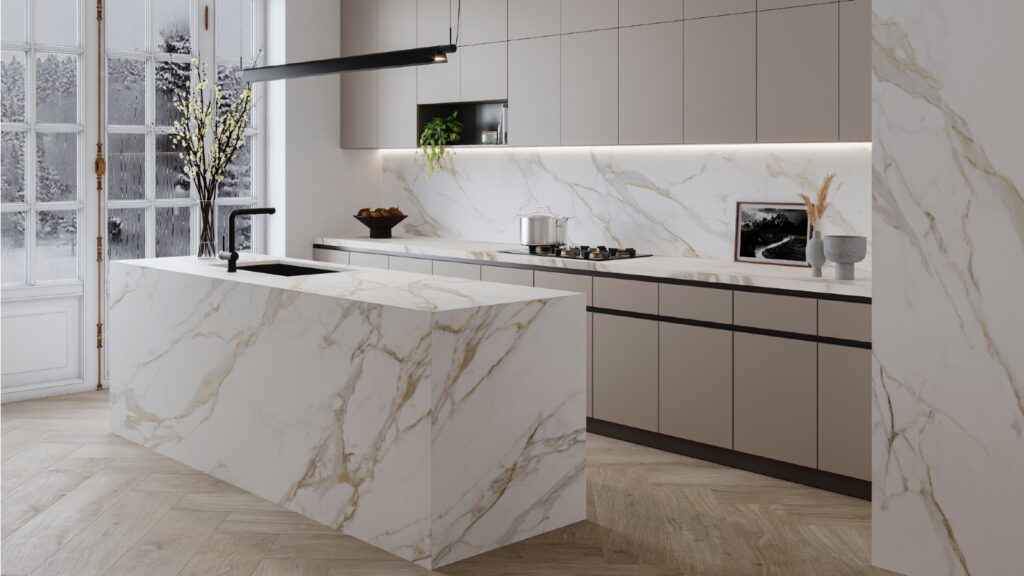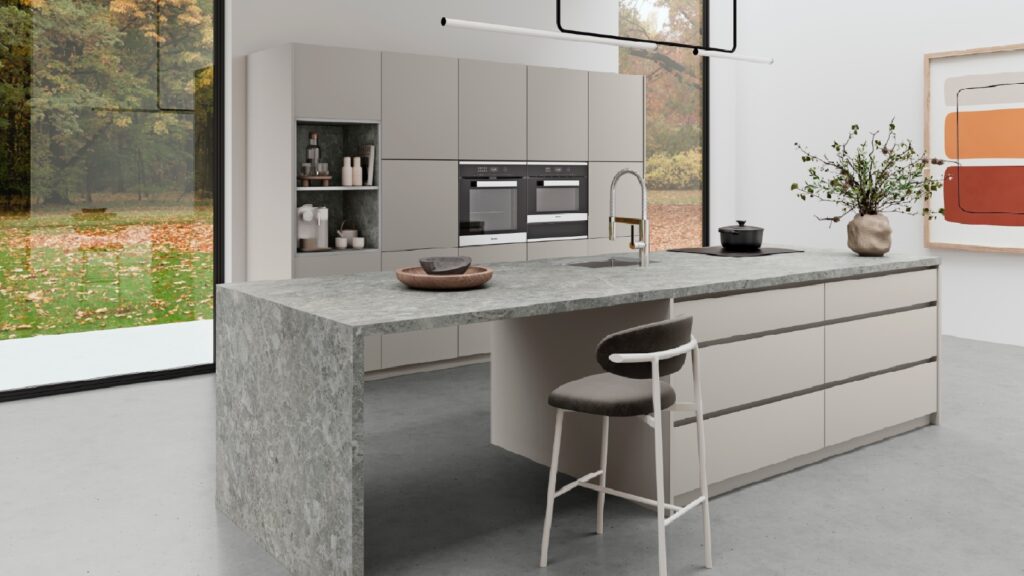How sensory design enhances mental well-being
Pippa Jameson, interior stylist, author and founder of The Sensory Home explains how designing for the senses offers a human-centred approach to design.
Pippa Jameson, interior stylist, author and founder of The Sensory Home, explains how designing for the senses offers a human-centred, personalised approach to design.

Sensory design is a strategy focused on creating spaces that engage the human senses in positive and meaningful ways.
Simply put, it ensures our environments contribute to our comfort, happiness, and mental well-being—a subject increasingly at the forefront of media discussions.
Sponsored Video
These conversations highlight the importance of addressing our needs and ensuring the spaces where we live, work, and learn are designed to support us.
Whether it’s a workplace, school, or home, sensory design plays a pivotal role.
While some individuals may be more sensitive to their surroundings, sensory design truly benefits everyone. Speaking from personal experience as a neurodivergent individual, and coming from a family that includes both neurodivergent and neurotypical members, I have lived experience of how thoughtful sensory design can positively impact all.
Unique, personalised kitchens
This human-centred approach to design moves beyond a “one size fits all” solution, focusing instead on creating spaces that cater to the unique needs of each individual.
Imagine sitting in a kitchen where the furniture doesn’t support your body, causing discomfort and strain.
The lighting might be so dim that you can’t read or so harsh that it triggers headaches.
Meanwhile, loud noises from kitchen appliances may clash with strong cooking smells, adding to your stress.
Or perhaps you’re working at the table but are unable to concentrate due to excessive noise from neighbouring flats.
While these factors may seem minor individually, together, they can create sensory overload, leading to heightened stress and anxiety, and in severe cases, can be debilitating, even triggering meltdowns.
This concept becomes especially relevant in kitchens, two of the most function-driven yet sensory-rich spaces in a home.
Kitchens, for example, are often filled with noise from appliances, strong cooking odours, bright or inadequate lighting, and surfaces that can feel cold or harsh.
Without thoughtful design, they can quickly become overwhelming environments.
Sensory design in kitchens focuses on reducing unnecessary noise, controlling odours, and incorporating warm, inviting materials that soften the space.
In addition to this, adjustable lighting ensures the kitchen adapts to different needs.
Kitchens also benefit significantly from thoughtfully designed sensory-nooks or spaces for gathering, as they often serve as the heart of the home.
These areas provide a place for people to come together, fostering connection and communication during meals or with friends and family.
By prioritising these gathering spaces, kitchens can become more than functional zones—they transform into welcoming hubs for shared experiences and belonging, enhancing both practicality and emotional well-being.
Fostering connection
Research highlights the profound benefits of regular human connection, particularly with family mealtimes.
For instance, the simple act of coming together consistently has been shown to reduce the risk of harmful habits and addictions, like disordered eating or dependency, later in life.
It’s easy to understand why: participating in regular gatherings promotes healthy habits, encourages open communication, and nurtures a sense of belonging.
By fostering an environment that supports collaboration and connection, sensory design enhances our physical spaces and helps us develop healthier lifestyles and stronger interpersonal bonds.
Related Articles
#socialwall
Sintered stone manufacturer Neolith has launched Calacatta Roma and Cappadocia Sunset, inspired by nature and classical architecture, and for use in kitchens or bathrooms walls, floors, in gardens or facades.

They belong to The New Classtone and Fusioncollections which interpret marble and natural stone, respectively, and boast Neolith’s antibacterial NeolEAT technology.
Inspired by Ancient Rome, Calacatta Roma (pictured top) pays homage to Italian Carrara marble, with ochre and grey veins in a white background.
While the Cappadocia region, in central Turkey, with its rock formations formed by volcanoes and underground cities, has inspired Cappadocia Sunset (pictured below).

Just like all of Neolith’s surfaces, Calacatta Roma and Cappadocia Sunset are resistant to heat and atmospheric conditions, are 100% recyclable, and do not contain added quartz to their formulation.
Mar 14, 2024
JUST OUT: @AcquabellaBath has unveiled a choice of shower grate patterns for its Base and Arq shower trays… https://t.co/kMN83c40Qf
JUST OUT: @FrankeUK unveils Mythos single lever mixers in Swivel Spout and Pull-out Nozzle options. #kitchendesign https://t.co/TSKCAo5r0e
INTERVIEW: Sales and marketing director of @blumuk David Sanders on how the kitchen industry has changed post-pand… https://t.co/k9LIpUhhDF
NEWS: Challenging housing market is driving home improvements, finds new research by @HafeleUK #HomeImprovement… https://t.co/eMB7jludIm
NEWS: British manufacturer @kudosshowersltd acquired by European SanSwiss. #acquisition #manufacturers #bathrooms https://t.co/gpOv7jMevn
NEWS: @HafeleUK announces Richard Curtis as managing director. #newhire #appointment #leadership https://t.co/NP8U5ramOb
NEWS: @officialbikbbi names CT1 sealant manufacturer as corporate sponsor. #installation #installer https://t.co/8zsxs2HI3n
NEWS: @quookeruk named one of fastest-growing companies in North West. #business #Awards https://t.co/9zZ1ZDGrFI
RETAILER FOCUS: Managing director and design director of UK Kitchen Retailer of the Year @KitchensbyJSG Jim Geddes… https://t.co/JhL3vmxwbd
NEWS: Consumers are renovating for long term, with kitchens and bathrooms a priority, finds @HouzzUK… https://t.co/9VhoTUDI0B
PROFILE: Managing Director of Flair Showers Alan Wright talks about the relaunch of the company, creation of a Show… https://t.co/WDMPqDt2Uk
The new @blumuk carbon black LEGRABOX boasts beautifully slim drawer sides, bringing furniture onto trend, easily b… https://t.co/DrEXXWTyQb
NEWS: House of Fraser owner @FrasersGroupPLC enters strategic partnership with @ao, buying a stake in the online e… https://t.co/44N0O9bekn
NEWS: @HowdensJoinery awarded @WhichUK Best Buy for its rigid cabinets and handleless kitchens. #kitchen… https://t.co/rALz8XRHbv
NEWS: @grohe invites 800 guests from around the world to its Grohe X Professional event in Lisbon, Portugal.… https://t.co/2RGjDum980
JUST OUT: Home appliance brand Candy has unveiled the Rapido dishwasher, claimed to be the fastest and most spaciou… https://t.co/mbWn2pJp2C
Newsletter
Sign up to receive our newsletter and we’ll send you details of our latest videos, competitions and much more

